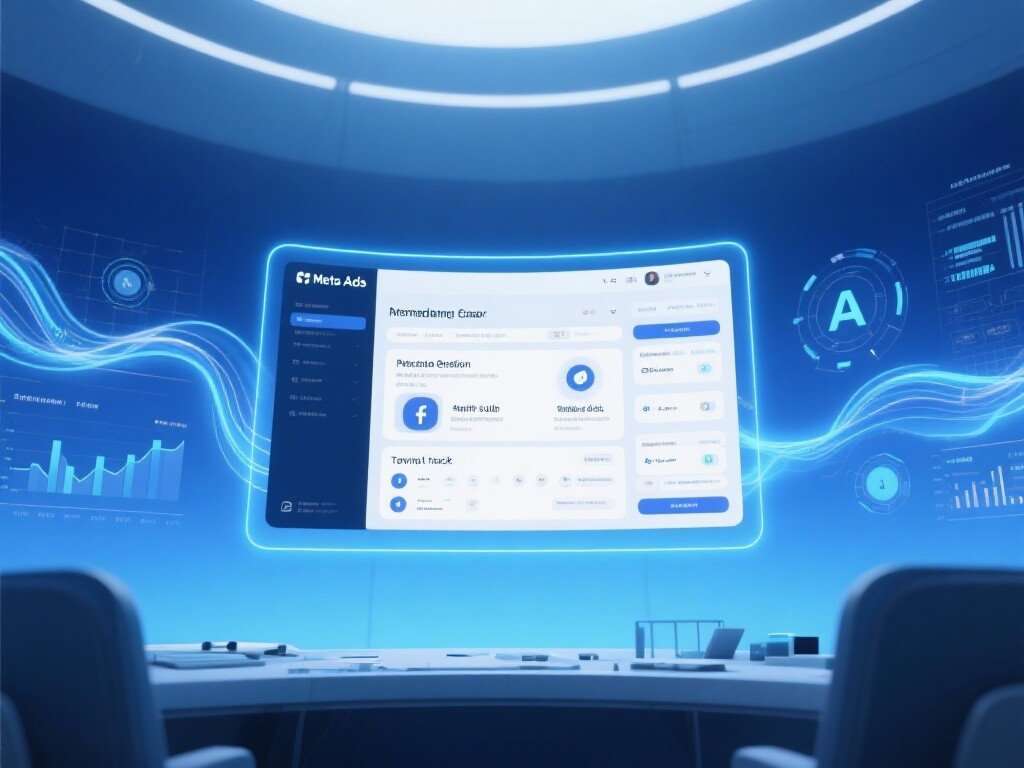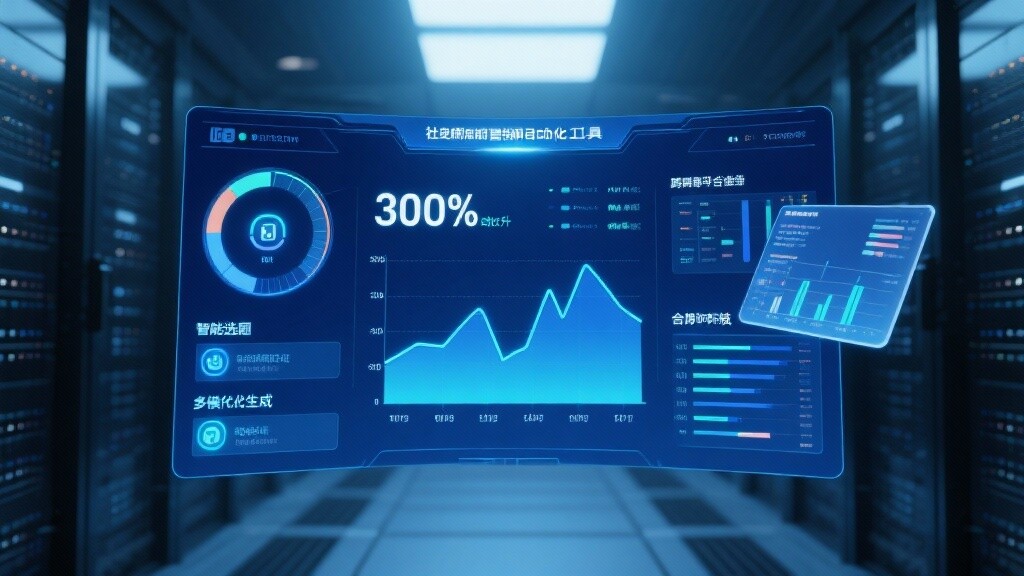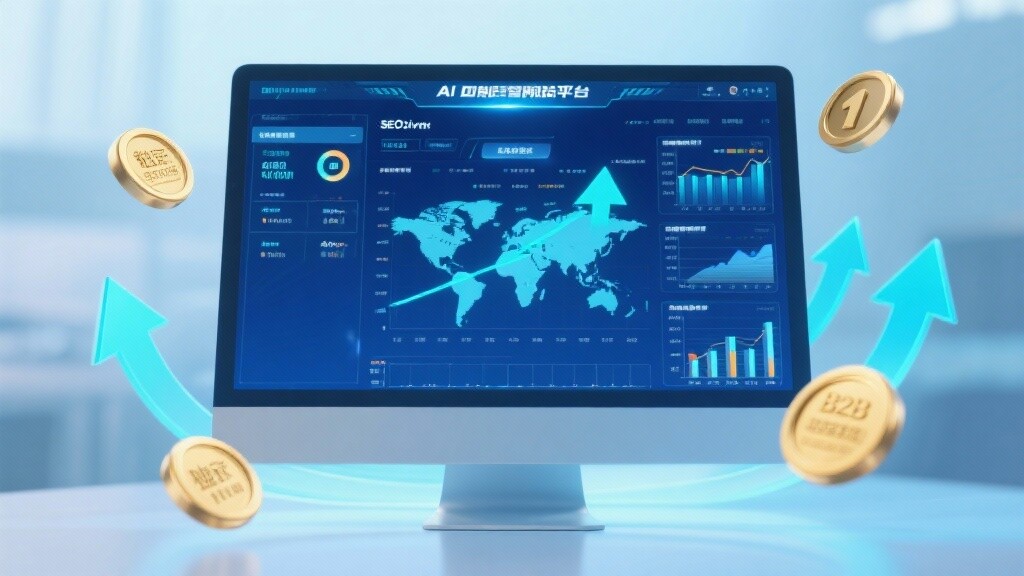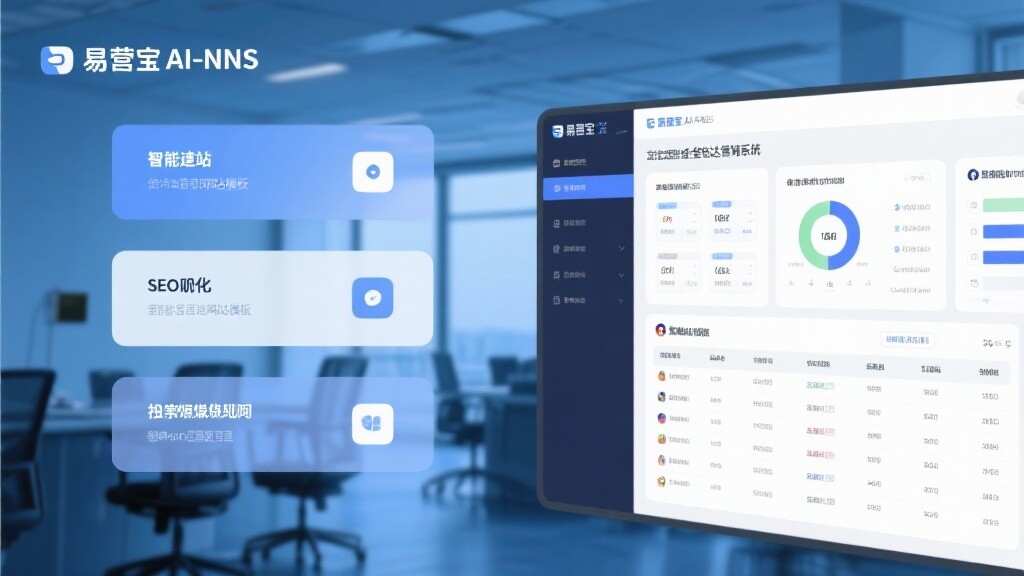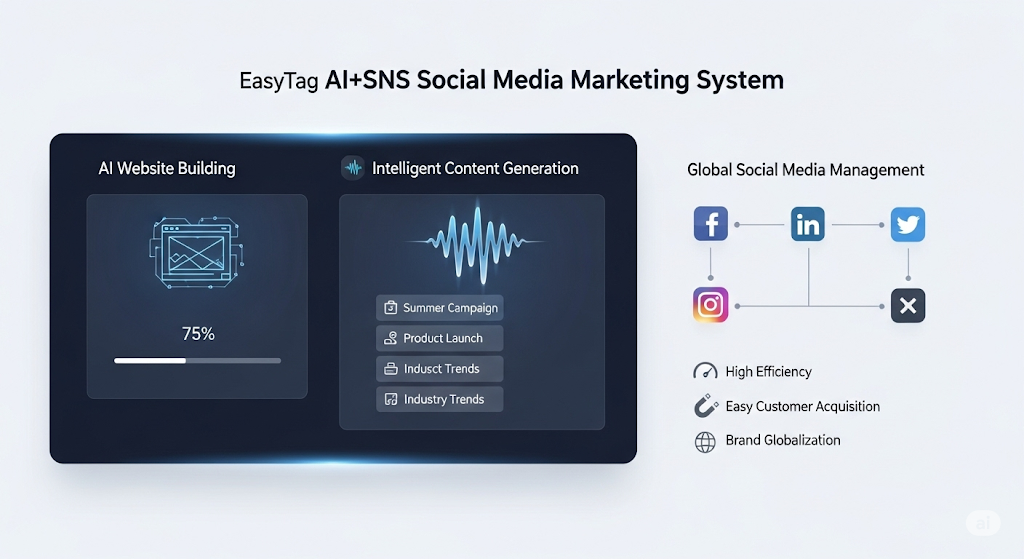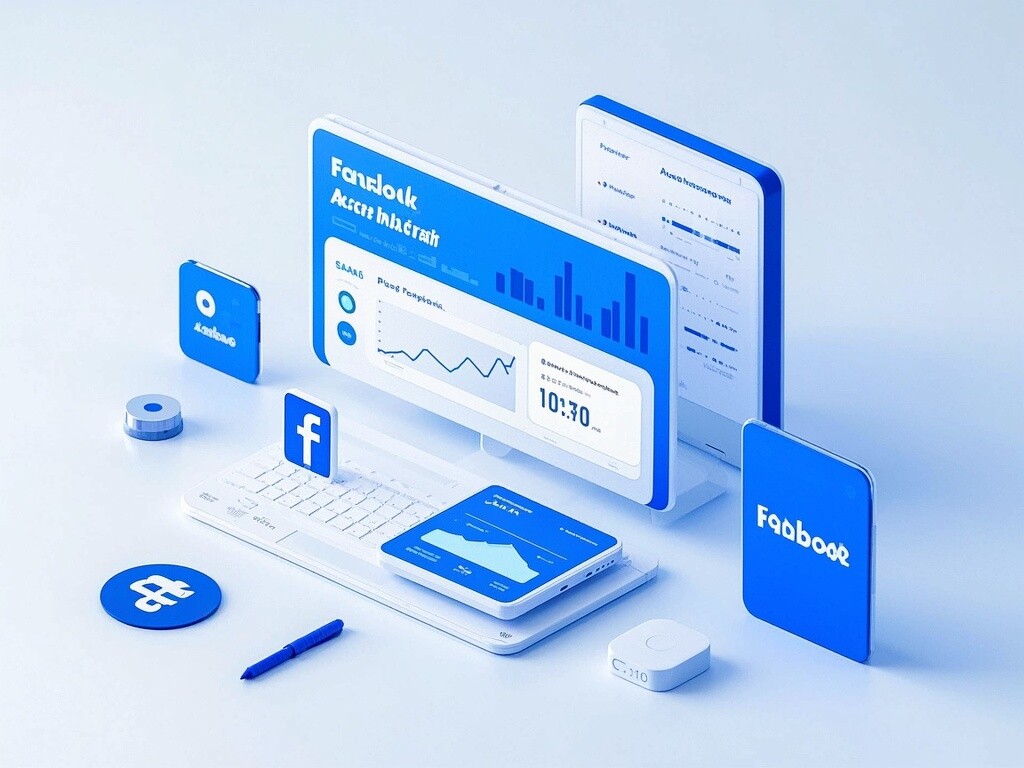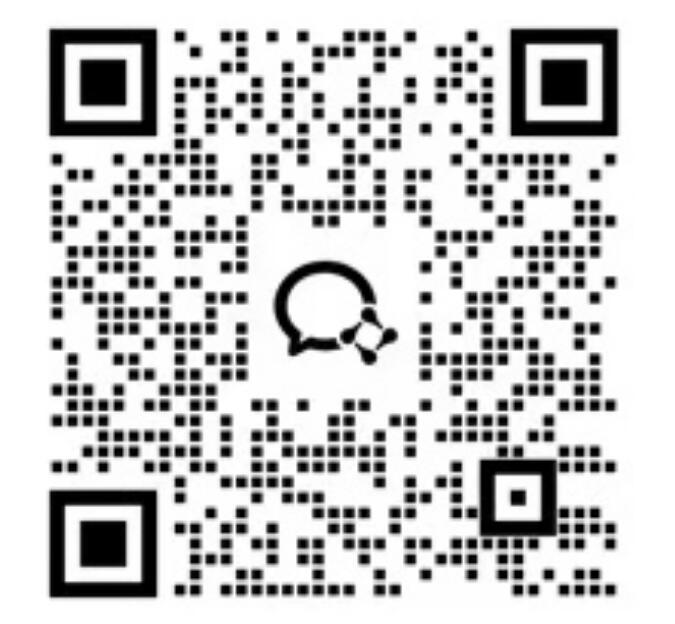Easy Operation Cloud Intelligent Website Marketing System Platform!
Definition of Facebook advertising: a social marketing system centered on user data
Facebook Ads (Meta Ads) refers to the process by which advertisers use Meta's ad management platform (Ads Manager) to display paid content to its massive user base (including users of Facebook, Instagram, Messenger, and Audience Network). Its core approach is to leverage Meta's extensive user data to achieve precise audience targeting and automated, goal-oriented optimization .
There are three core pillars of Facebook advertising:
Targeting: Reach highly segmented audiences based on demographics, interests, behaviors, and custom audiences (such as Lookalike Audiences).
Objective-Driven: Campaigns must be designed around clear business goals (e.g., brand awareness, traffic, conversions, app installs).
Smart Bidding: Leveraging Meta's AI algorithm, we automatically find and bid on users most likely to complete your goals (e.g., purchases, add-to-carts) within your budget.
The essence of Facebook advertising: **Discovery marketing that combines "people looking for content" and "content looking for people" is a bridge for brands and consumers to establish deep connections.
The History of Facebook Ads: From Simple Banners to AI-Powered Conversion Engine
The history of Facebook advertising is a process of continuous evolution around user data, mobile devices and automation trends, with the core being to continuously improve advertising relevance and conversion efficiency .
1. Early Stage: Simple Banners and Right Sidebar Ads (2004-2010)
Technical features: Ads are mainly displayed in the form of banners and text links in the right column . The positioning is simple and mainly based on user profile information (such as age and gender).
Limitations: Low ad relevance, low click-through rate (CTR), and the main goal is brand exposure .
2. Mobile, information flow and native advertising (2010-2015):
Core Shift: With the widespread adoption of smartphones, Facebook shifted to a mobile-first approach . Ads were integrated into users' News Feeds, mimicking native content and boosting user adoption.
Data empowerment: ** The launch of Facebook Pixel allows advertisers to track off-site conversion data, ushering in the era of performance marketing**.
3. The revolution of algorithm optimization and smart bidding (2015-2020):
Technical core: Introducing intelligent bidding strategies based on machine learning (such as minimum cost and target cost), giving AI the decision-making power for advertising delivery.
Audience deepening: **Lookalike Audience** becomes a core tool for high conversion rates.
Platform integration: Deep integration of Facebook and Instagram advertising has broadened reach channels.
4. Privacy Challenges and the CAPI Era (2020 to Present):
Challenge: Privacy policy changes such as Apple’s iOS 14.5 update restrict browser-side Pixel tracking.
Response: Meta launched the Conversions API (CAPI) to encourage advertisers to adopt server-side tracking to ensure that the advertising system can still obtain accurate conversion data and maintain the efficiency of smart bidding while protecting privacy.
Trend: Advertising is moving towards more **less data, smarter ** automated and simple advertising (Advantage+).
The technical principles of Facebook advertising: AI auctions and data feedback loops
The effectiveness of Facebook advertising relies on its complex AI auction system and data closed-loop feedback mechanism .
1. Ad Auction Principle: Total Value Mechanism
The winner of a Facebook ad auction isn’t always the highest bidder, but rather the ad with the highest total value :
Bid: The maximum amount an advertiser is willing to pay (automatically adjusted by AI in Smart Bidding).
Estimated Action Rate (EAR): Meta AI estimates the likelihood that a user will take the desired action (e.g., purchase, add to cart, click) after seeing an ad. This is the most critical factor , determined by historical data and the quality of the creative.
Quality & Relevance Score: Based on user feedback on the ad (such as whether it is hidden, whether it is shared, and interaction rate).
Core conclusion: High-quality, highly relevant ads can win the auction with lower bids because they have a high estimated action rate and a higher total value.
2. Core Technologies: Meta Pixel and Conversions API (CAPI)
Meta Pixel (browser): A JavaScript code installed in a website's codebase. It transmits data about website visits, add-to-cart items, and purchases to Meta via the user's browser. However, it is susceptible to browser and iOS privacy settings.
Conversions API (CAPI) (Server-side): Allows advertisers' servers to securely exchange conversion data directly with Meta's servers.
Value: CAPI ensures the integrity and accuracy of data feedback , serving as the lifeline for feeding smart bidding AI and maintaining efficient advertising systems. In the age of privacy, CAPI is essential for achieving precise attribution.
3. Smart Bidding AI and the Learning Period
How it works: After advertisers set their goals (such as target CPA/ROAS), AI will automatically and dynamically adjust the bid for each impression based on real-time contextual signals (who the user is, when and where) to maximize conversions or ROI.
Learning Phase: Any new ad set undergoes a learning phase, requiring approximately 50 target conversions for the AI to stabilize its optimization. During this period, avoid frequent adjustments to settings.
The core features and strategic advantages of Facebook advertising
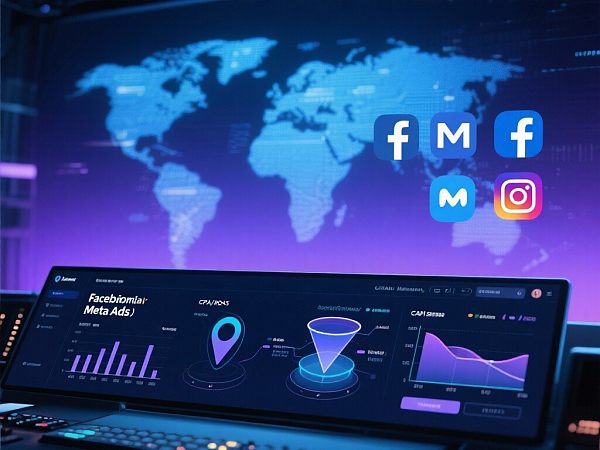
Facebook's advertising system, with its unique data advantages and delivery mechanisms, provides strategic value that is difficult to match on other platforms.
1. Extremely refined audience targeting and scalability
Features: Targeting based on thousands of dimensions including user interests, behaviors, personal data, consumption preferences, etc. in the Meta ecosystem.
Lookalike Audience: Based on your existing high-quality customer data, AI algorithms can automatically find millions of new users with similar characteristics , achieving efficient customer acquisition at scale .
2. Powerful demand stimulation and discovery marketing
Features: Unlike search engine ads (users actively search), Facebook ads are displayed when users are in a relaxed and social state , which can stimulate potential demand .
Advantages: Suitable for new product promotion, brand story delivery and creating new market demand , it is an important tool for brand building.
3. Cross-platform multi-point integration and automated optimization
Features: Ads can be displayed simultaneously across multiple channels and placements, including Facebook, Instagram, Messenger, and Audience Network .
Automation advantages: AI can allocate budgets to the most effective placements in real time, ensuring the most efficient reach in scenarios where users are most receptive to ads.
4. Deep retargeting capabilities
Features: It can accurately reach website visitors, users who have watched videos, and users who have participated in homepage interactions for the second or third time.
Advantages: Promoting sales or urging potential customers to place orders after initial recognition can effectively recover abandoned purchases and achieve a very high conversion rate .
In-depth application of Facebook advertising and high ROI strategy
To get high returns from Facebook advertising, you must adopt a structured, goal-oriented strategy combined with data tracking and optimization.
1. Full-Funnel Strategy
Awareness/Tofu (Top of Funnel): Targets brand awareness or video views . Leverages a broad audience and engaging short videos/visual creatives to achieve mass exposure at minimal cost.
Consider/Mofu (Middle of Fun): The goal is traffic or add-to-cart . Use interest-based targeting and similar audiences . Ad content focuses on product features and usage scenarios .
Conversion/Bottom of Fun: The goal is to purchase/inquire . Use retargeting audiences (site visitors, cart abandoners). Ad content focuses on limited-time offers, customer testimonials, and strong CTAs .
2. Creative Testing & DCO
Strategy: Advertising effectiveness depends on creativity . Continuous A/B testing (testing images, videos, and copy) is required.
DCO (Dynamic Creative Optimization): Utilize platform tools to automatically combine different titles, images, and CTAs to present personalized optimal versions to different audiences, thereby increasing the estimated action rate .
3. Budget optimization and target ROAS/CPA strategy
Strategy: Use Target ROAS (Return on Ad Spend) or Target CPA (Cost Per Acquisition) Smart Bidding whenever possible.
Execution: Within your budget , give the AI control over bidding. Enable CBO (Budget Optimization) at the ad set level to let the AI allocate budget to the best-performing ad sets.
4. Strategic Data Tracking: Comprehensive Deployment of CAPI
Strategy: The Conversions API (CAPI) must be fully deployed, either in addition to or as a replacement for pixel tracking.
Value: Ensuring that the conversion data learned by the advertising system's AI is complete and accurate is key to the stability and efficiency of smart bidding strategies .
Yiyingbao: Your Facebook advertising and data optimization expert
The Facebook advertising service provided by Yiyingbao is a systematic solution based on data engineering, algorithm foresight and high-conversion creativity .
CAPI/Pixel precise deployment and attribution audit: Ensure your conversion tracking data is accurately transmitted while maintaining the highest privacy standards , providing a solid foundation for AI-powered smart bidding.
Target ROAS Strategy Customization: Set and monitor the most appropriate Target ROAS Smart Bidding strategy based on your product profit, LTV (Customer Lifetime Value), and market competition .
High-Converting Creatives and A/B Testing: Our creative team focuses on developing creatives that maximize estimated action rates and continuously conducts structured A/B testing .
Elite Lookalike Audience Model Building: Leverage high-value customer data and specialized tools to build the most accurate and scalable lookalike audience models.
Full-funnel advertising architecture management: Unified management of your three-tier funnels of awareness, interest, and conversion ensures reasonable budget allocation and maximizes overall ROI.
Choose Yiyingbao and turn your Facebook ads from blindly burning money into a data-driven growth engine with predictable returns .
FAQ
1. Why Do Facebook Ads Enter the "Learning Phase" and How Should I Respond?
The learning phase is a necessary stage for AI to accumulate data and optimize bidding.
Reason: When you launch a new ad set or modify core settings, Meta's AI needs to collect approximately 50 conversion data points to identify which users and placements are most likely to achieve the campaign objectives.
Strategy: During the learning phase, avoid frequent setting changes and ensure your budget is sufficient to complete the learning within a reasonable timeframe. After the learning phase ends, ad performance typically becomes more stable.
2. With Stricter Privacy Policies, Is Meta Pixel Tracking Still Effective?
Pixel remains useful but must be used in conjunction with CAPI.
Function: Pixel can still capture browser-side data where tracking is permitted and work with CAPI for data deduplication to ensure conversion data accuracy.
Best Practice: It is recommended to use CAPI as the primary, more reliable tracking method, with Pixel serving as a backup and auxiliary tool to maintain the ad system's learning quality.
3. In Facebook Ads, Which Is More Important: Creative or Targeting?
Creative (70%) is more critical than targeting (30%).
Creative Is the Primary Driver: Meta's AI algorithm is highly advanced. Even with broader targeting, the AI can optimize creative content to find users most likely to convert. A strong creative can make users pause and improve estimated action rates, thereby reducing costs.
Strategy: Prioritize resources for A/B testing and iterative improvements of creative assets, then use targeting for initial segmentation and scaling.
4. What Is Lookalike Audience and How Does It Work?
Lookalike Audience is one of the most efficient customer acquisition tools in Facebook ads.
Mechanism: You upload a high-quality seed audience (e.g., past 90-day purchasers or high-intent leads). Meta's AI analyzes these users' interests, behaviors, and demographic traits to find millions of similar-profile new users.
Application: This is a scientific method to "clone" high-value customers, enabling rapid scaling of premium new customer sources with exceptional efficiency.
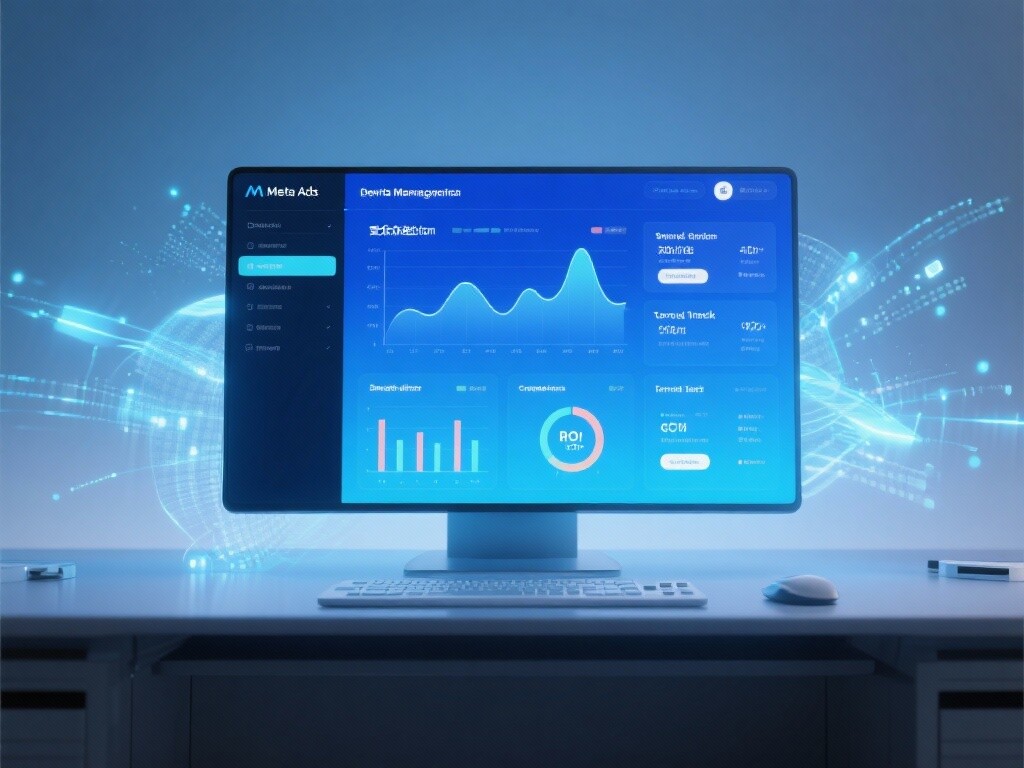
Customer Reviews
Mr. Yu, CEO of a D2C Vertical E-commerce Platform
"Our Facebook ad ROI was previously unstable, mainly due to inaccurate data attribution. The EasyAd team first helped us fully deploy CAPI, ensuring precise conversion data feedback. On this foundation, they rebuilt our full-funnel ad architecture and successfully tripled high-value customer sources using Lookalike Audience strategies. The result: Our Facebook ad ROAS stabilized with a 40% increase, and the ad system became exceptionally stable and predictable."
Ms. Shen, CMO of an Online Education Platform
"We faced challenges with high customer acquisition costs and creative fatigue. EasyAd's experts not only optimized our target CPA bidding strategy but, more crucially, guided us in creating short-video creatives highly aligned with education sector traits, significantly boosting estimated action rates. Through structured A/B testing, we identified low-cost, viral creatives. Now, our new user registration cost (CPA) has dropped by 35%, and Facebook ads have become our primary scalable growth channel."
 Social media marketing automation tool: 300% efficiency boost!This article systematically elaborates on the core value, technical principles, and implementation strategies of social media marketing automation tools. Combined with the AMP/MIP mobile technology of EasyWebPro's intelligent website-building system, it provides a practical solution for cross-border e-commerce and local service scenarios, delivering a 300% efficiency improvement.
Social media marketing automation tool: 300% efficiency boost!This article systematically elaborates on the core value, technical principles, and implementation strategies of social media marketing automation tools. Combined with the AMP/MIP mobile technology of EasyWebPro's intelligent website-building system, it provides a practical solution for cross-border e-commerce and local service scenarios, delivering a 300% efficiency improvement. Exclusive rights to foreign trade websites, how to quickly seize the market?This paper systematically analyzes the market prospects of foreign trade independent station agent business, technical threshold breakthrough strategy and the core competitiveness of the exclusive agent policy of EYP, to provide entrepreneurs with landable regional market occupation program.
Exclusive rights to foreign trade websites, how to quickly seize the market?This paper systematically analyzes the market prospects of foreign trade independent station agent business, technical threshold breakthrough strategy and the core competitiveness of the exclusive agent policy of EYP, to provide entrepreneurs with landable regional market occupation program. Exclusive agency rights in hand, foreign trade sites easy to profit!This article describes in detail the foreign trade website exclusive agency right project of Yiyingbao Information Technology (Beijing) Co., Ltd, including agency joining policy, technical advantages, market prospects and successful cases, to help business decision-makers quickly understand this zero threshold digital entrepreneurial projects.
Exclusive agency rights in hand, foreign trade sites easy to profit!This article describes in detail the foreign trade website exclusive agency right project of Yiyingbao Information Technology (Beijing) Co., Ltd, including agency joining policy, technical advantages, market prospects and successful cases, to help business decision-makers quickly understand this zero threshold digital entrepreneurial projects. How to utilize EYB AI+SNS social media all-wise marketing system to enhance brand exposureThis article deeply analyzes the operation process and combat effect of EYB AI+SNS social media marketing system, covering key aspects such as intelligent station building, multi-language SEO optimization, social media matrix operation, etc., and provides an explanation of the recruitment policy of city partners.
How to utilize EYB AI+SNS social media all-wise marketing system to enhance brand exposureThis article deeply analyzes the operation process and combat effect of EYB AI+SNS social media marketing system, covering key aspects such as intelligent station building, multi-language SEO optimization, social media matrix operation, etc., and provides an explanation of the recruitment policy of city partners.
 AI+SNS Smart Marketing SystemEYBao AI+SNS Social Media All Intelligent Marketing System - Precise social capture in the era of social media, supporting one-click synchronization of content on mainstream platforms such as Facebook, LinkedIn, etc., AI intelligent rewriting of postings to enhance the degree of adaptability, 24/7 intelligent customer service and user profile analysis, helping enterprises to efficiently expand the global market.
AI+SNS Smart Marketing SystemEYBao AI+SNS Social Media All Intelligent Marketing System - Precise social capture in the era of social media, supporting one-click synchronization of content on mainstream platforms such as Facebook, LinkedIn, etc., AI intelligent rewriting of postings to enhance the degree of adaptability, 24/7 intelligent customer service and user profile analysis, helping enterprises to efficiently expand the global market. Facebook advertising promotionEasyAd provides professional Facebook advertising services, including precise targeting, fan page operations, and comprehensive marketing solutions, helping businesses enhance brand exposure and conversion rates.
Facebook advertising promotionEasyAd provides professional Facebook advertising services, including precise targeting, fan page operations, and comprehensive marketing solutions, helping businesses enhance brand exposure and conversion rates.


